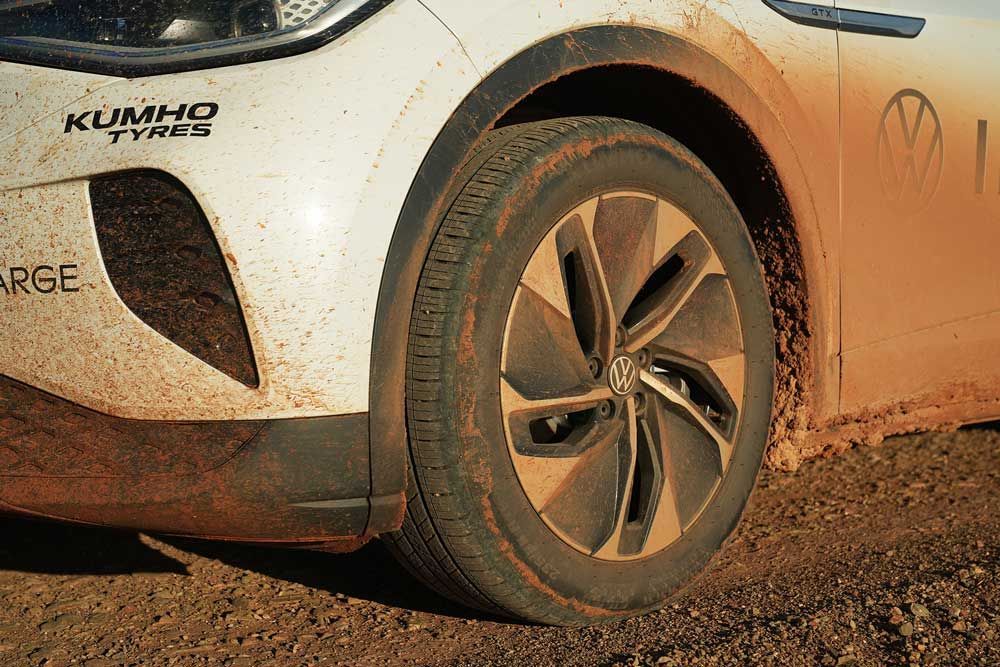How To Check Tyre Pressure
Hello, and thanks for stopping by. As you know, we sell tyres and offer maintenance services. Additionally, we created this blog to share helpful tips about vehicle care. We aim to keep you safe on the road and your vehicle in excellent condition!
Your tyres work hard for you. They travel on hard asphalt or tough terrain, often at high speed and regularly carrying significant loads. Tyres lose pressure over time due to various factors, such as hitting bumps, altitude changes, driving conditions, and weather. As a result, a loss of one or two kilopascals of air each month is common.
However, before we explore
how,
let’s first understand
why
regular monitoring of air pressure in tyres is crucial.
Why checking your tyre pressure is important
Just one of the reasons below is enough motivation to maintain checks. If you combine any, you have a compelling reason to put a regular
tyre pressure monitoring system in place.
- Road safety - air pressure plays a crucial role in maintaining the tyre’s safety and performance on the road.
- Sluggish steering - this can result in loss of vehicle control.
- Fuel economy - low tyre pressure will mean the vehicle burns through more fuel and ultimately costs you more money.
- Vehicle sits close to the ground - this is an awkward feeling and unsafe, as it compromises your visibility range.
- Longevity - low air pressure results in more wear and tear, thus compromising the tyre’s integrity and longevity.
- Your budget and the environment - burning fuel inefficiently and replacing tyres is not good for your bank balance or the state of the planet.
How do I check tyre pressure?
OK, the first recommendation is not to check at petrol service stations, or at least not to use their tyre pressure gauge as gospel. Why? You can’t be 100% sure the station maintains its equipment’s condition. Even more relevant - you can’t be sure other motorists haven’t misused or damaged the machine.
Moreover, you’ve probably driven to the petrol station, right? Well, in that case, your tyres are already warm. They need to be cold for an accurate reading.
You will find recommendations in your car owner’s manual (typically stored in the glove box) or on a sticker on the inside of the driver’s door. It is not uncommon for the front and rear tyre pressure recommendations to vary.
Firstly, look at your tyres and see if you can notice any visible drop in pressure or damage.
Assuming they are cold and you can access a tyre pressure gauge, follow these steps to inflate tyres:
- Locate the air valve and unscrew the top.
- Place the gauge firmly on the valve - push down to secure it.
- Refer to the gauge’s pressure reading.
- If the number is lower than the recommended figure, attach the air hose to the valve and increase the pressure until the correct level is achieved. You can re-use your gauge to double-check for peace of mind.
- Once you have achieved the ideal level, replace the cap on the screw.
What should my tyre pressure be?
If you’re wondering what pressure car tyres should be, use the following table as a guide. However, please feel free to contact our team (details at the bottom of this page) for more advice.
What tyre pressure for 4WDs and trucks?
Good question. This is where things can get sticky as the load configurations for larger
4WD tyres is broader than for standard vehicle tyre pressure. Technically you need to set air pressure for each trip, assuming that you carry heavy loads that regularly vary in weight.
Let our professionals check your tyre air pressure
We conduct a
complimentary
and professional tyre pressure check when you book any Latrobe Valley Bandag
tyre service, This gives you an excellent indication of pressure levels and also ensures complete peace of mind that we’ve checked everything and you’re genuinely good to go!










